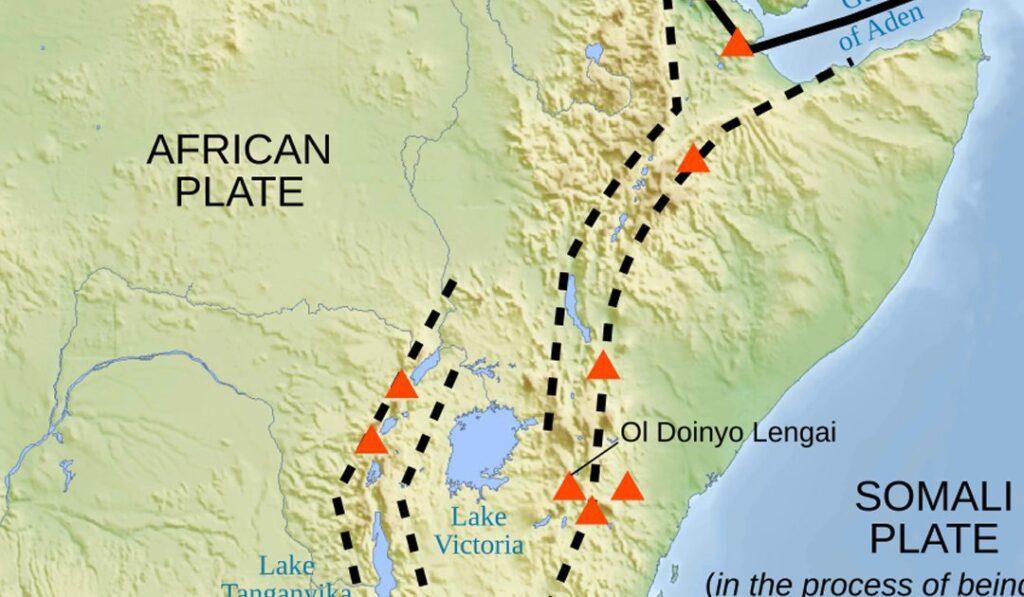The African Rift Valley, or Great Rift Valley, is a remarkable and monumental geographical and geological phenomenon that stretches over 6,000 kilometres from the Red Sea in the north through to Mozambique in south-eastern Africa. This phenomenon started forming about 20 to 25 million years ago and the process is ongoing, progressing southwards. It is divided into three main branches, i.e. the Eastern Rift Valley (Gregory Rift), the Western Rift Valley (Albertine Rift) and the Ethiopian Rift Valley.
The Rift Valley formed as a result of tectonic activity within the Earth’s lithosphere. The large plates of the Earth’s crust float on the semi-fluid mantle beneath. The African Rift Valley emerged when the African Plate began to split into two smaller subplates: the Somali Plate in the east and the Nubian Plate in the west.
This rifting process (also called continental rifting) involves the stretching and thinning of the Earth’s crust, which creates cracks and faults. As the plates pull apart, magma from the mantle rises to fill the gaps: this leads to volcanic activity and the formation of rift valleys characterised by deep valleys, mountains, and volcanoes such as Mount Kilimanjaro and Mount Kenya, highlands and lakes, some of which – like Lake Tanganyika, Lake Victoria and Lake Malawi – are among the deepest in the world. Earthquakes are also common.
Will it eventually fragment the continent? While the African Rift Valley has the potential to do so, this would take millions of years. On average, the plates are moving apart at a rate of 6 to 7 millimetres per year, but in some areas such as the Gulf of Aden and the Red sea branches, it can be up to 2 centimetres per year. In the distant future, continental rifting, which is undoubtedly progressing southwards, could lead to the splitting of the African continent into two parts, breaking the eastern part of Africa away from the rest of the continent, creating a new ocean and forming a separate landmass where the rift is occurring.
However, this is an extremely slow geological process, and no one can predict with certainty how or when it will take place: what is certain though, is that the fragmentation of the African continent would occur over a timeframe of tens of millions to even hundreds of millions of years.
References/Sources
How on Earth? Terrence McCarthy









